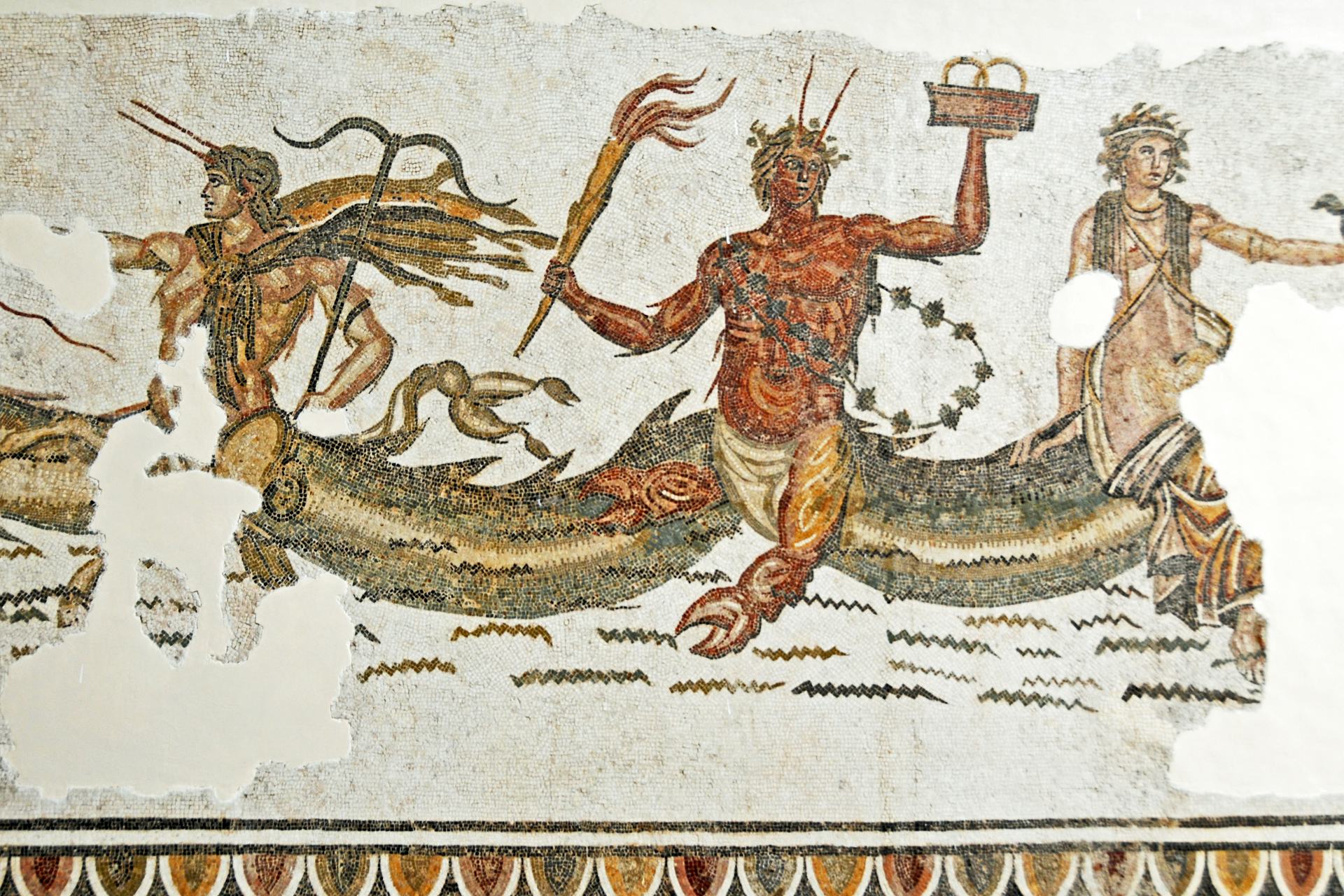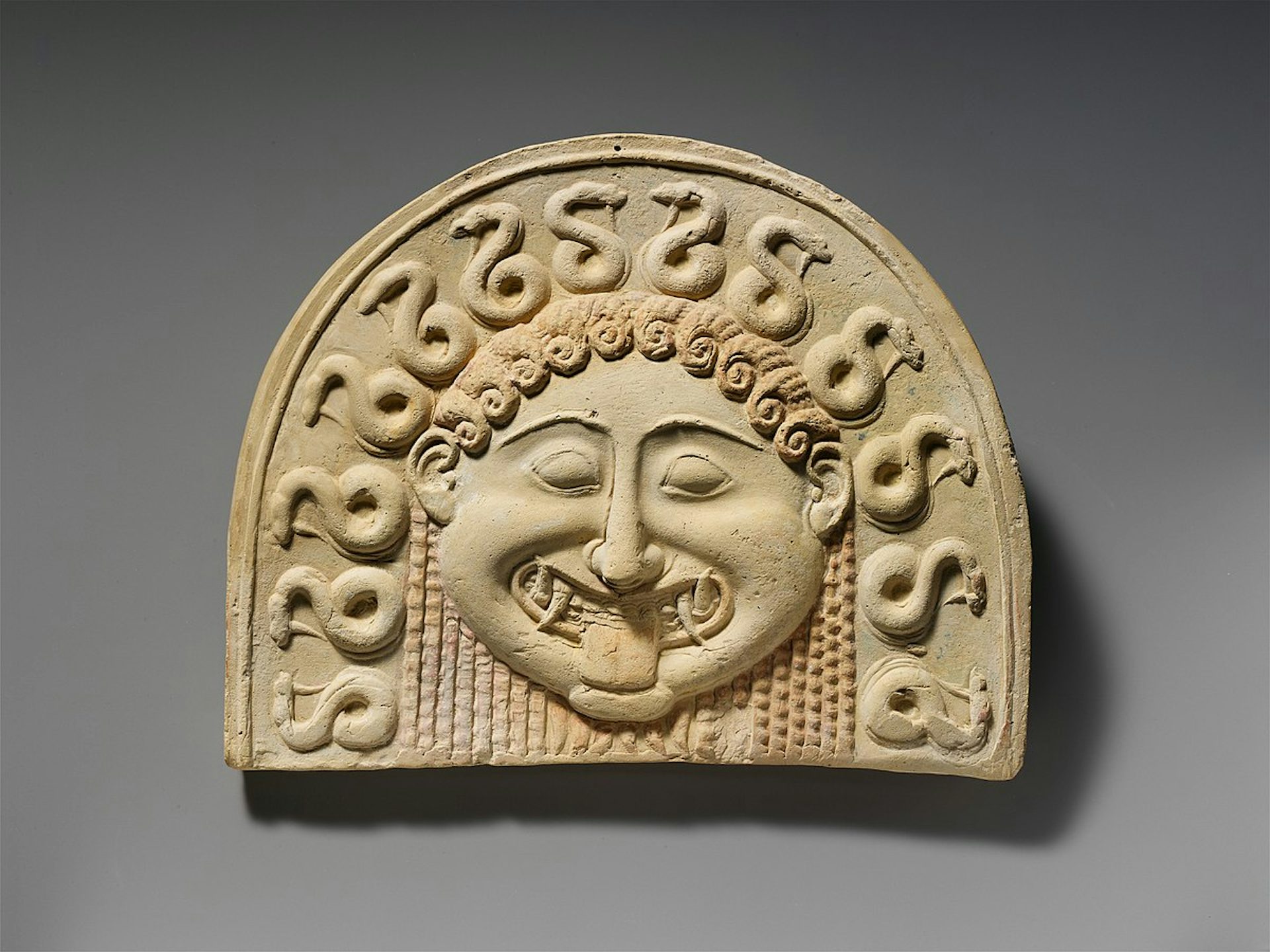Phorcys

Roman mosaic from Trajan’s Baths of Acholla, perhaps showing Phorcys (center), Ceto (right), and Triton or Thaumas (left)
Bardo National Museum, Tunis / Dennis JarvisCC BY-SA 2.0Etymology
The name “Phorcys” (Greek Φόρκυς, translit. Phórkys) is related to the Greek word φορκός (phorkós), meaning “white.”[1] This name may stem from Phorcys’ connection with the sea and the white foam of the waves. Alternatively, it may be meant to evoke the white hair of old age, as Phorcys was sometimes known as an “old man of the sea.”
Pronunciation
English
Greek
Phorcys Φόρκυς (Phórkys) Phonetic
IPA
[FAWR-sis] /ˈfɔr sɪs/
Titles and Epithets
In at least one early source, Phorcys was known by the epithet ἅλιος γέρων (hálios gérōn), “old man of the sea.”[2] However, this epithet was more commonly associated with Phorcys’ brother Nereus (also a sea god).
Attributes
General
Phorcys, one of the “old men of the sea,” was typically imagined as a wizened sea god. He was the father of various monsters who dwelled in the terrifying depths of the sea, and was sometimes represented as a merman-like creature himself. As one of the lords of the deep, he danced beneath the waves with the other sea creatures.[3]
Iconography
Phorcys can occasionally be found in ancient works of art, including vase paintings and mosaics. He was often shown as human from the waist up but with the scaly lower body of a fish. Artists sometimes gave him a beard, though a few later representations show the “old man of the sea,” paradoxically, as a beardless and youthful god. In a few depictions, he holds a torch aloft.[4]
Family
According to the standard tradition, Phorcys was born from the union of Gaia, the primordial embodiment of the earth, and Pontus, the embodiment of the sea. His siblings were the sea deities Nereus, Thaumas, Eurybia, and Ceto.[5]
But there were other versions of Phorcys’ genealogy, too. According to one early account, Phorcys was the son of Eidothea, the daughter of the sea god Proteus.[6] In the Orphic tradition, Phorcys seems to have been the son of Oceanus and Tethys, whom the Orphics believed to be the first divine couple.[7] Another Orphic source made him one of the Titans.[8]
In one obscure tradition, which the commentator Servius attributes to the Roman scholar Varro, Phorcys was the son of Poseidon and a nymph named Thoosa. According to this account, he was originally the king of the islands of Sardinia and Corsica. After Phorcys was killed in a war against Atlas, his followers made him a god.[9]
In most traditions, Phorcys married his sister Ceto. Together they were the parents of several terrifying monsters, sometimes known as “Phorcides” (after their father). These offspring included the white-haired Graeae, the stony-faced Gorgons, the snake monster Echidna, and the gigantic serpent who guarded the Garden of the Hesperides (sometimes called Ladon, but other times unnamed).[10]

Gorgon head on terracotta tile from Tarentum in South Italy (c. 540 BC)
The Metropolitan Museum of ArtPublic DomainOther sources swelled the ranks of Phorcys’ offspring. According to Homer, Phorcys was the father of Thoosa, who later gave birth to the Cyclops Polyphemus.[11] According to Sophocles, he was the father of the Sirens.[12] Apollonius of Rhodes made him the father of Scylla,[13] a sea monster whom Phorcys brought back to life (in one account) after she was slain by Heracles.[14]
Finally, one tradition—mentioned only by an early commentator, who does not identify their source—made Phorcys the father of the Hesperides.[15]
Popular Culture
Phorcys occasionally features in contemporary adaptations of Greek mythology, though he is not nearly as popular as many other mythical figures (including some of his own offspring). He appears as a tentacled sea monster in the Marvel comics.